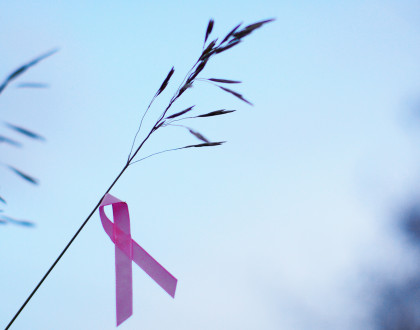What is that White Spot on Your Mammogram?

If you are a woman over the age of 40 who is getting screened for breast cancer with an annual mammogram, your test may serve another important purpose. Approximately 40% of women who have mammograms in the U.S. are considered to have dense breasts. Women in this group who have “very dense breasts” are almost 5 times more likely to develop breast cancer than those with “low breast density.” If you are wondering where you may fall on the spectrum, I have a few things to share about dense breast tissue and breast cancer detection.
What is breast density?
The anatomy of a woman’s breast is made up of mostly fat along with a complex network of fibroglandular (breast and connective) tissue. Breast tissue includes lobules, which produce milk and ducts that transport it from the lobules to the nipple when breastfeeding. Connective tissue serves as the glue that holds everything together. Breast density refers to the ratio of fat to fibroglandular tissue detected by a mammogram. Women who are categorized by high or extremely high breast density have considerably more fibroglandular tissue than fat.
Breast Density and Mammogram
Mammography images that show large amounts of denser breast and connective tissues can be difficult to interpret. On a film-screen, or digital image these areas appear light gray or white, whereas fat in the breast appears dark. Cancerous cells look similar in color to dense breast tissue, causing the effect of what many have described as finding a “polar bear in a blizzard.” Since dense breast tissue can hide cancer from view on a mammogram, it is important for a woman to ask her provider for an assessment of her breast density.
What can I do?
More research is being done to understand breast density and its relationship to breast cancer. Determining the level of a woman’s breast density is a helpful step toward understanding her individual risk. A woman having high levels of breast density is quite common, and by itself is not necessarily a cause for alarm. Future advancements in breast imaging technology may give physicians better views of dense breasts. For now, the American Cancer Society continues to recommend the following screening guidelines:
· If you are 40 or over, have annual mammograms, yearly clinical breast exams and perform monthly breast self-exams
· If you are 20 or over, have clinical breast exams by a medical provider every three years and perform monthly breast self-exams
· Women at any age, talk with your doctor about your family history and any other factors that may increase your risk for breast cancer
To receive reminders to schedule your yearly mammogram, annual physical, or to perform your monthly breast self-exam, click here to enroll in YW Boston’s healthy text reminder service.
